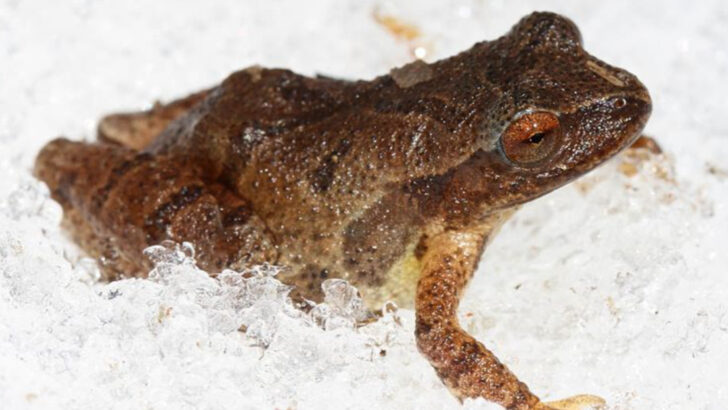They don’t just survive winter—they freeze solid and come back to life. While we’re bundling up and scraping ice off windshields, these amphibians are turning into frogsicles in the dirt… and thriving. Hearts stop. Blood freezes. They look dead. But come spring? They hop away like nothing happened. Forget bears in caves—these cold-blooded masters of survival have cracked the code on enduring the cruelest chills. From forests in Alaska to swamps in the Midwest, they’ve learned to outlast snow, frost, and weeks of frozen stasis. Meet 15 remarkable amphibians that laugh in the face of winter and treat freezing solid like a long nap.
Wood Frog
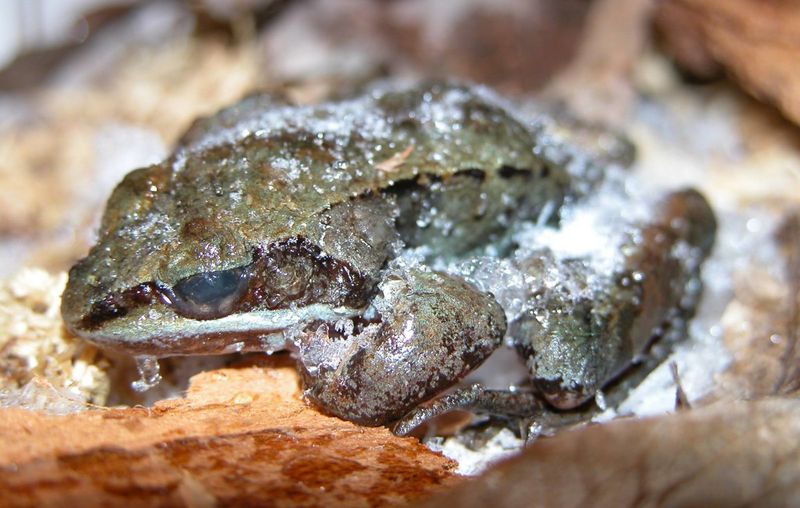
With the charm of a woodland sprite, the wood frog is a master of survival. Its body can freeze up to 65%, stopping its heart and breathing, and yet it dances back to life with the spring thaw.
This little amphibian’s secret lies in its natural antifreeze, glucose, which protects its vital organs during the icy grip of winter. Remarkably, the frog spends months in this suspended animation, nestled under leaves and snow.
Emerging with the first warm days, wood frogs are among the earliest breeders in their forest habitats.
American Bullfrog
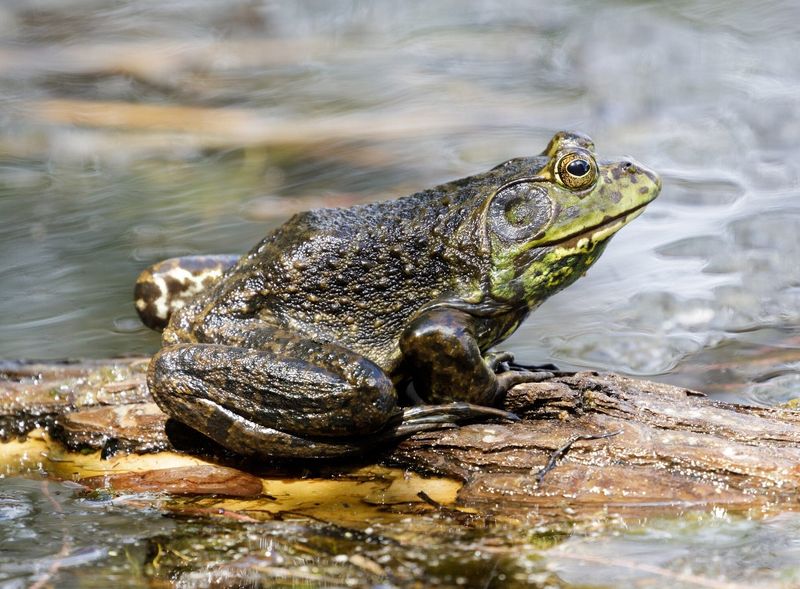
Beneath the icy surface of ponds, the American bullfrog rests in a tranquil slumber. It hibernates at the bottom, absorbing oxygen through its skin.
Unlike its smaller counterparts, this robust amphibian doesn’t freeze but relies on the warmth of the water below. Its metabolism slows drastically, conserving energy throughout the cold months.
When spring arrives, the bullfrog awakens, ready to croak its deep, resonant calls that herald the warmer days ahead.
Spring Peeper
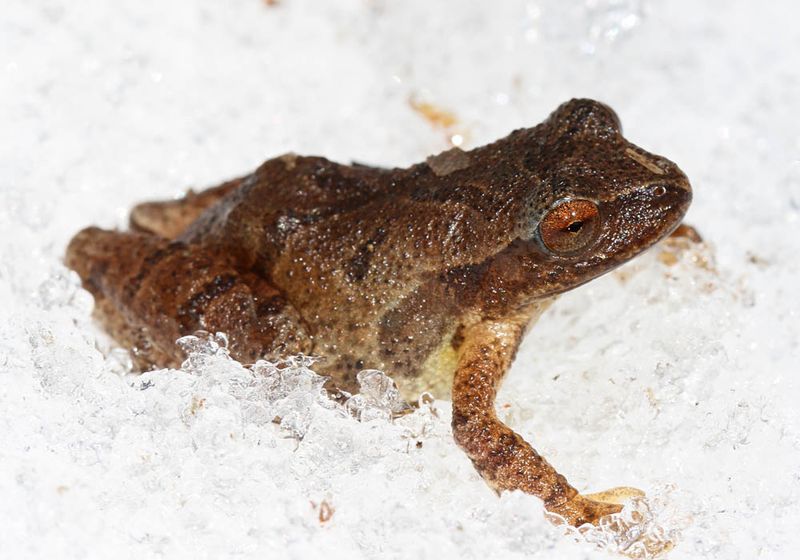
The spring peeper, with its signature chirp, is a tiny marvel of endurance. This minuscule frog survives freezing by burrowing into mud where it enters a state of suspended animation.
During this time, its heart stops, and its body freezes, yet it revives with the slightest hint of warmth. The peeper’s ability to generate glycerol keeps its cells from bursting in the cold.
As winter fades, its chorus fills the air, a symphony that announces the return of life to the thawing woods.
Northern Leopard Frog
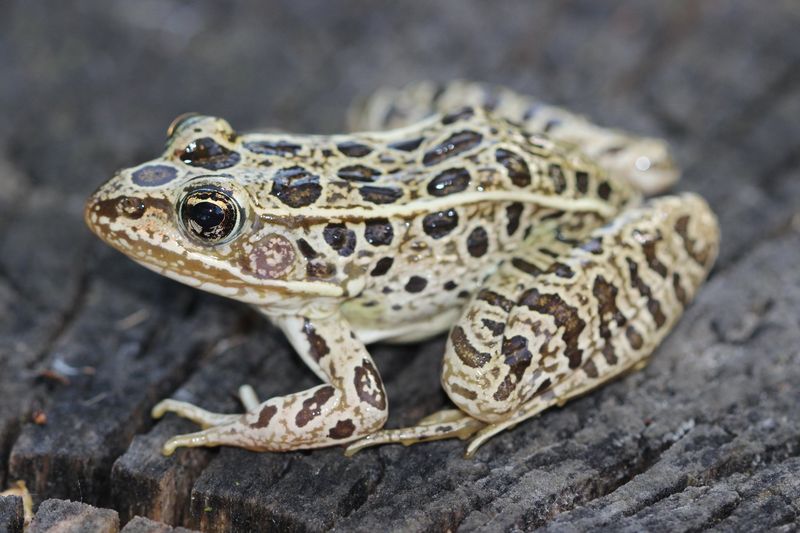
With its striking patterns and vibrant colors, the northern leopard frog is a cold-weather survivor. It hibernates in shallow streams and ponds, where oxygen levels remain stable.
Its body survives the cold by slowing metabolic processes and utilizing stored energy reserves. Unfazed by the icy grip of winter, it remains submerged until the world warms again.
When spring arrives, these frogs are ready to leap into action, their calls echoing across wetlands as they seek mates and food.
Gray Tree Frog
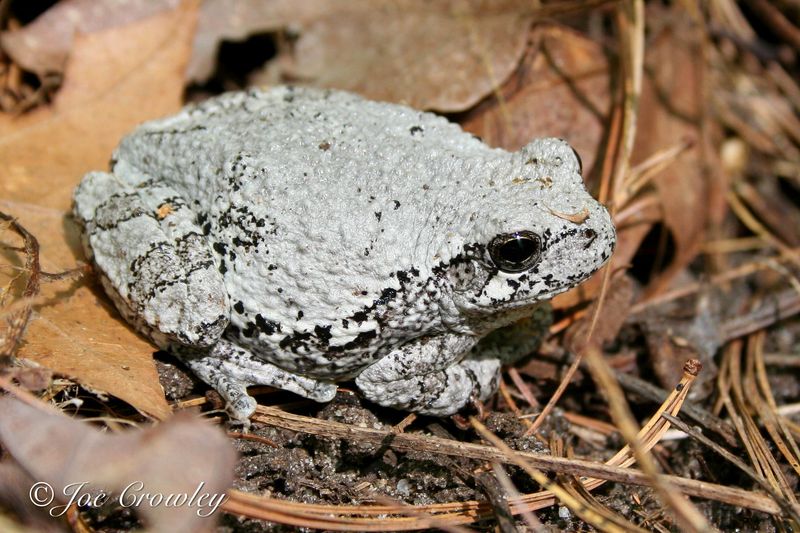
The gray tree frog, an arboreal acrobat, survives freezing winters by producing glycerol, which acts as a natural antifreeze. This unique adaptation allows it to freeze solid without damage.
During winter, the frog shelters in tree bark crevices, its body temperature dropping to match the freezing environment. As spring approaches, it thaws and resumes its agile lifestyle.
The gray tree frog’s ability to adapt to extreme cold demonstrates its amazing resilience and survival prowess.
Western Chorus Frog
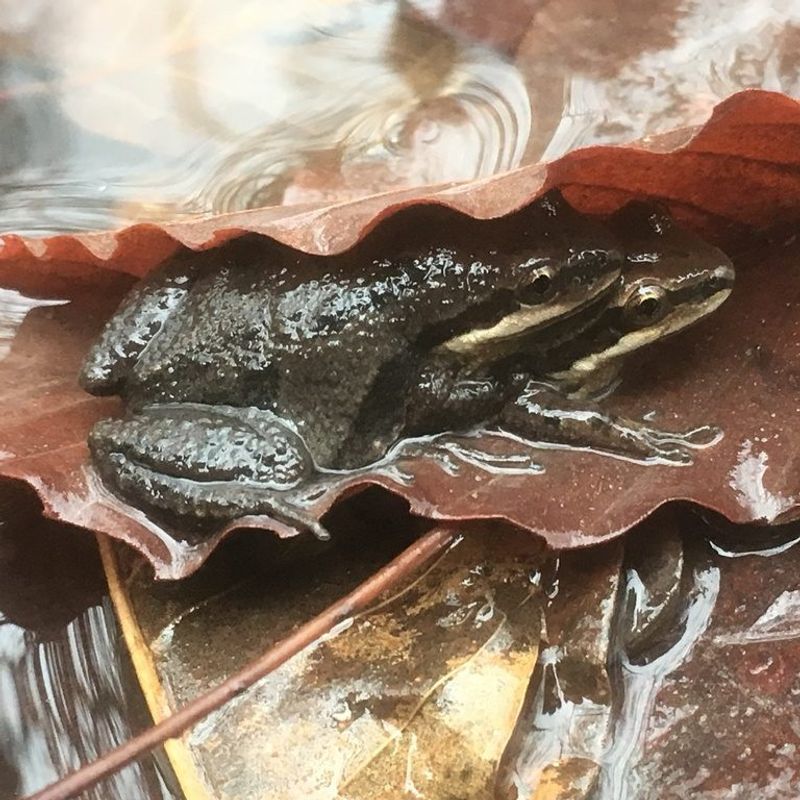
With a voice that signals the change of seasons, the western chorus frog is a remarkable cold survivor. It endures winter by burrowing beneath leaves and soil, where it freezes almost completely.
The frog’s cells remain protected by glucose, preventing ice formation inside them. This strategy allows it to survive temperatures well below freezing.
When spring sunshine returns, the western chorus frog thaws and begins its mating calls, a sound that fills marshlands with life.
Green Frog
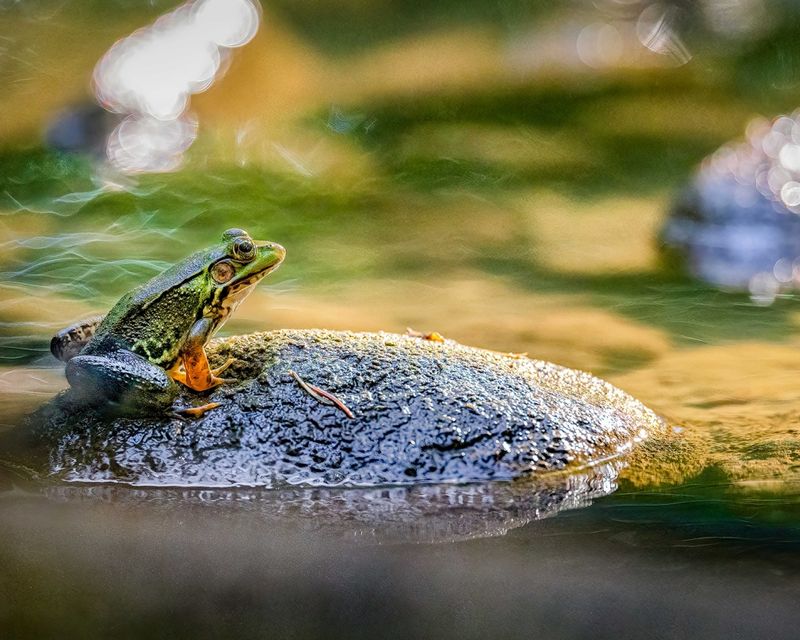
The green frog, a common denizen of North America’s waterways, endures winter by hibernating underwater. It finds refuge in the mud at the bottom of ponds, where it remains motionless.
During this time, the frog absorbs oxygen through its skin and slows its metabolism significantly. Unlike other amphibians, it doesn’t freeze but relies on the insulating properties of water.
As spring returns, the green frog awakens, its croak a familiar sound in the warming landscape.
Eastern Newt
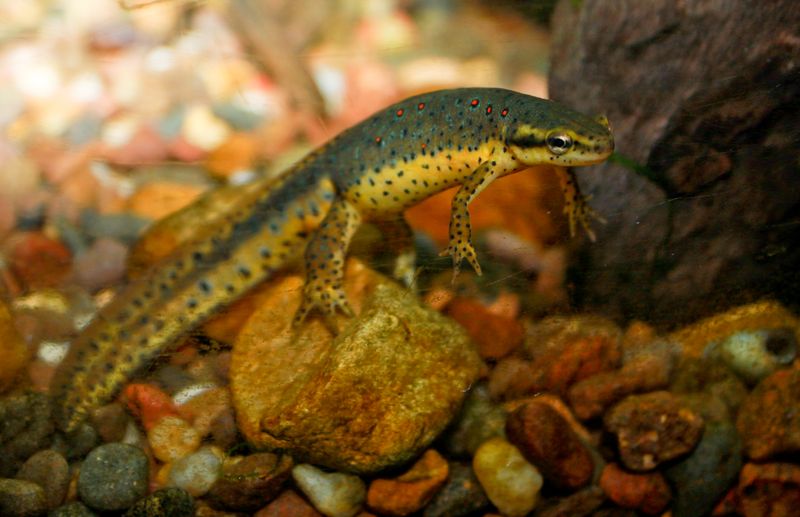
Known for its captivating life cycle, the eastern newt also boasts an incredible ability to endure cold. During winter, it retreats to the depths of ponds where the water remains unfrozen.
Here, the newt enters a state of dormancy, its metabolism reducing substantially. It survives by absorbing oxygen through its skin while remaining inactive.
As temperatures rise, the eastern newt becomes active again, its vibrant colors brightening the aquatic world.
Spotted Salamander
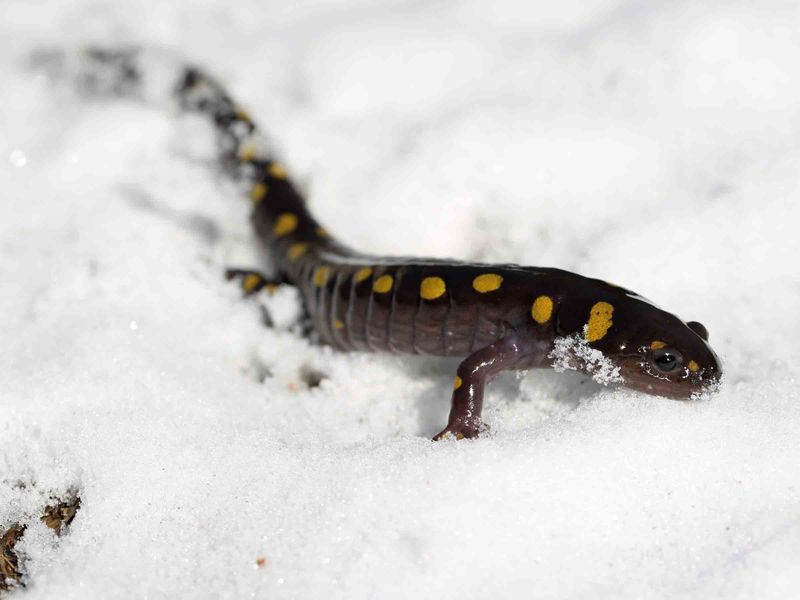
The spotted salamander, with its distinctive yellow spots, braves winter by hibernating underground. It seeks out moist burrows that provide insulation from the freezing temperatures above.
Protected by soil and leaf litter, the salamander’s metabolism slows, allowing it to conserve energy until spring.
As the ground thaws, it emerges to partake in the seasonal migrations, heading to breeding pools to fulfill its lifecycle.
Jefferson Salamander
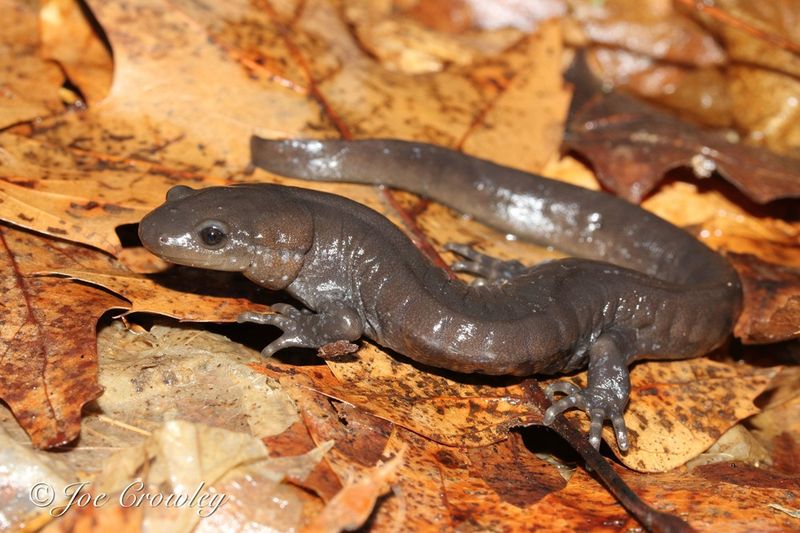
Jefferson salamanders, named after the third U.S. President, exhibit remarkable resilience to winter’s chill. They hibernate in burrows beneath the frost line, staying insulated from the snow.
During this time, their metabolism slows drastically, conserving energy until warmer days return. This amphibian thrives in deciduous forests, emerging in spring to breed in vernal pools.
The Jefferson salamander’s adaptability highlights its enduring presence in its native habitats.
Blue-Spotted Salamander
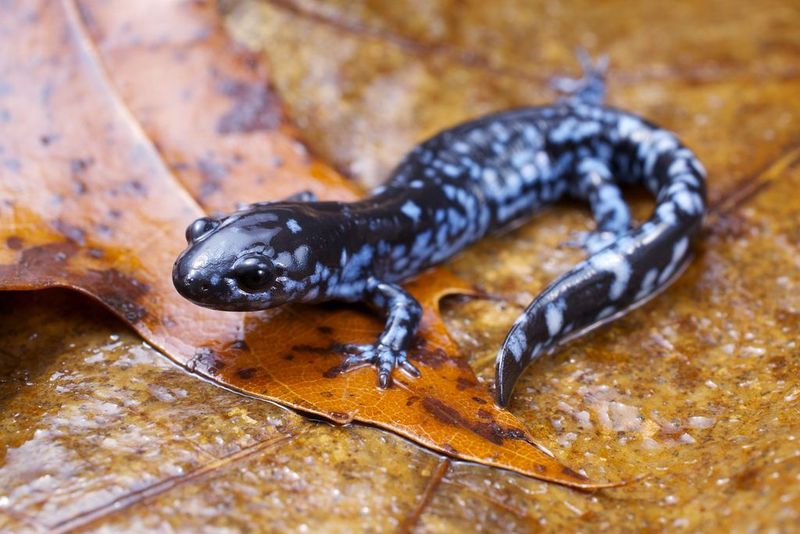
The blue-spotted salamander, with its striking azure markings, finds refuge from winter’s bite by burrowing underground. It hibernates where temperatures remain stable, protected from icy extremes.
This salamander’s energy conservation strategy allows it to survive until the first signs of spring. Its preference for moist habitats aids its winter survival.
When the snow melts, the blue-spotted salamander awakens, seeking vernal pools for breeding, an annual ritual of renewal.
Red-Backed Salamander
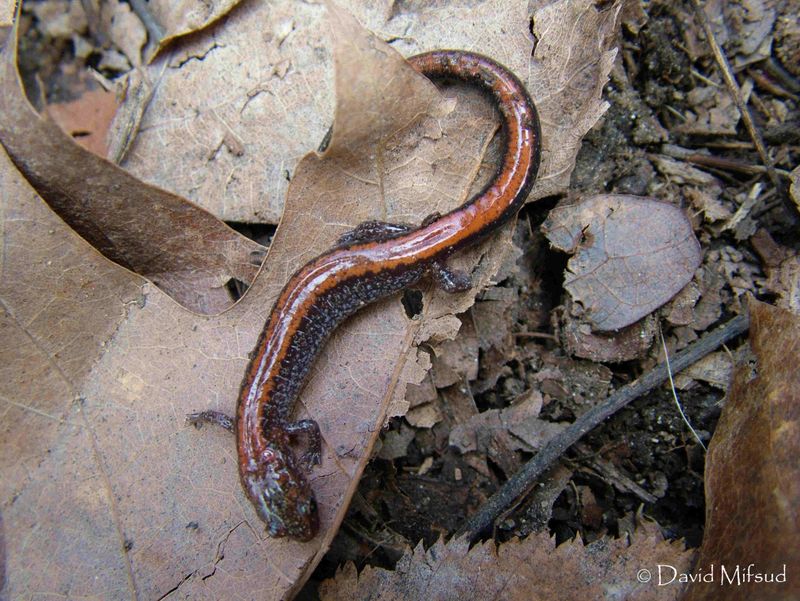
The red-backed salamander, known for its striking dorsal stripe, endures winter by seeking shelter under logs and rocks. It avoids freezing by choosing insulated microhabitats.
Unlike many amphibians, it doesn’t rely on water but survives on land throughout the cold months. Its slow metabolism keeps it alive until spring.
As temperatures rise, this terrestrial salamander becomes active, returning to its forest habitat to hunt and breed.
Mudpuppy
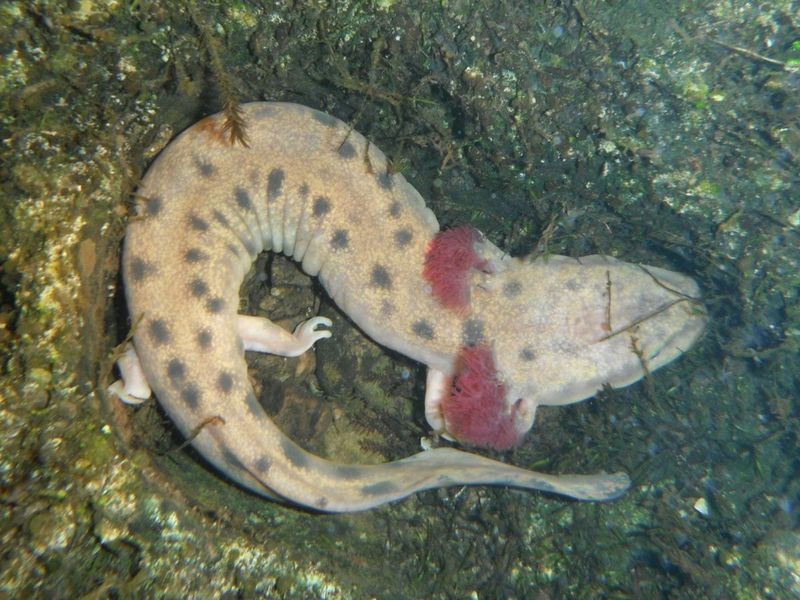
The mudpuppy, a permanent aquatic resident, defies winter by remaining active under ice-covered waters. It thrives in slow-moving streams where it finds shelter and sustenance.
This nocturnal amphibian continues to hunt and feed during winter, relying on its gills to extract oxygen from the frigid water.
As one of the few fully aquatic salamanders, the mudpuppy’s winter endurance is a testament to its adaptability and survival skills.
Hellbender
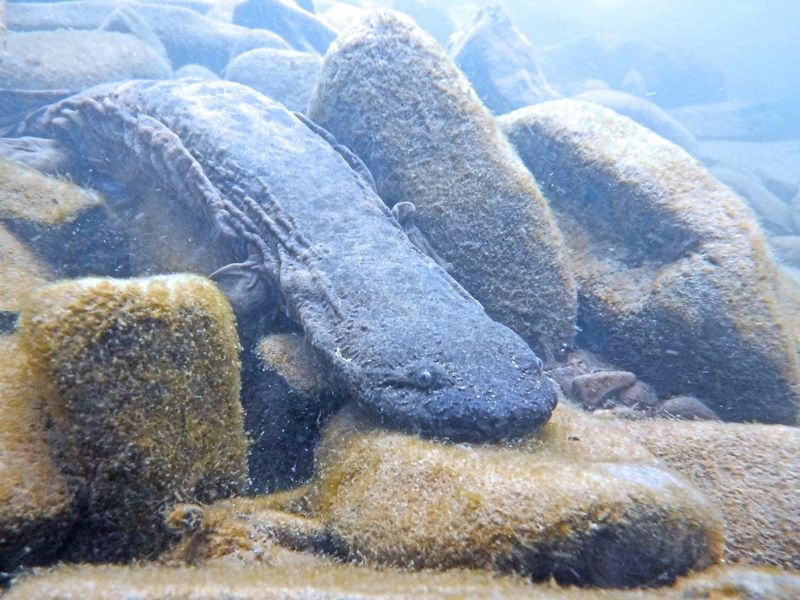
The hellbender, North America’s largest salamander, survives winter in swiftly flowing rivers. Its flat body allows it to cling to rocks, avoiding the ice above.
During winter, it remains active, continuing to feed and breathe through its skin. The hellbender’s preference for oxygen-rich waters ensures its survival.
With the arrival of spring, the hellbender continues its life undisturbed, a giant of the underwater world.
Axolotl
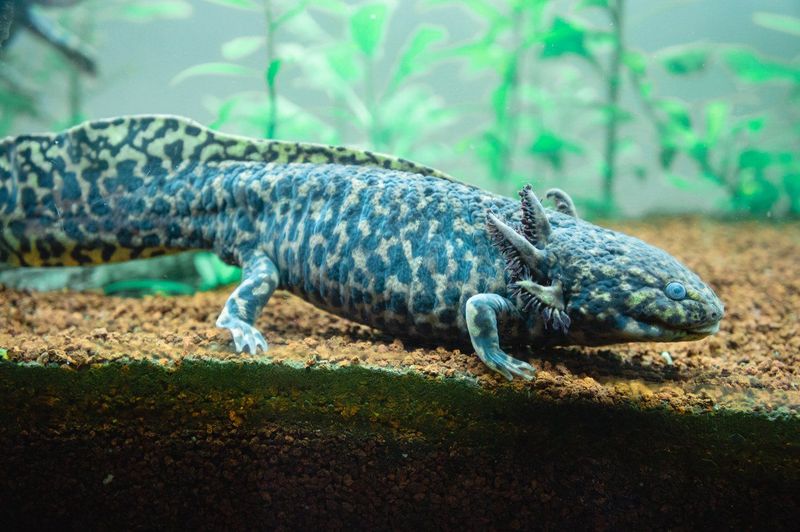
The axolotl, famous for its regenerative abilities, also has a knack for enduring cold. Native to high-altitude lakes, it tolerates low temperatures by slowing its metabolism.
Unlike its relatives, the axolotl remains aquatic throughout its life, finding refuge in deep waters during winter. Its resilience in the face of cold highlights its evolutionary success.
Spring brings renewed energy to the axolotl, as it resumes its active lifestyle in the warming waters.

